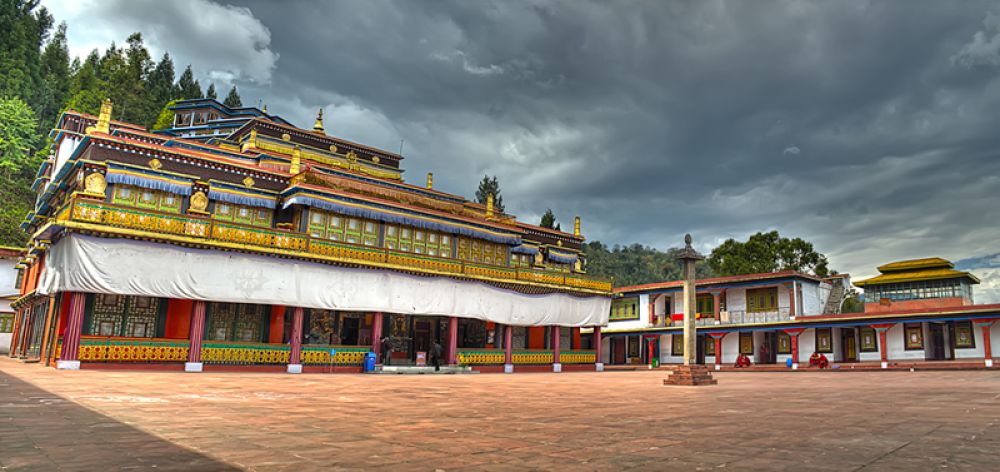

Situated in the northeastern state of Sikkim, the Rumtek Monastery is one of the most significant and largest monasteries in the region. It serves as the main seat of the Karma Kagyu lineage outside Tibet and is a splendid example of Tibetan monastic architecture. The original monastery was established by the 9th Karmapa Wangchuk Dorje in the 16th century. However, it was the 16th Karmapa, Rangjung Rigpe Dorje, who constructed the current Rumtek Monastery in the 1960s after taking refuge in Sikkim following the Chinese occupation of Tibet.
The influx of tourists to Rumtek Monastery began to rise post its reconstruction, as Sikkim slowly opened to tourism. Recognized for its religious significance, unique architecture, and vivid annual festivals, the monastery emerged as a significant place of interest for those traveling to the Himalayan region. The history of tourism at Rumtek is intertwined with the broader narrative of Sikkim's integration into India (which happened in 1975) and subsequent development as a tourist destination.
In recent years, the focus on sustainable and ecotourism practices has increased, with visitors seeking authentic cultural experiences. Tourists to Rumtek Monastery are now more inclined towards understanding and participating in local customs and Buddhist practices, with a great emphasis on respecting the natural and cultural environment of the monastery.
Additionally, the trend of digital nomadism has sparked an interest in more remote and serene locations like Rumtek, as travelers look for peaceful retreats to work from. The monastery, with its captivating beauty and tranquility, has become a haven for those seeking a mix of spirituality and solitude to inspire their remote work.
In light of the global health crisis, there has also been a surge in the popularity of wellness tourism. Individuals are increasingly drawn to destinations like Rumtek Monastery that offer opportunities for meditation, yoga, and spiritual learning, offering a sanctuary for rejuvenation of mind, body, and spirit.
Rumtek Monastery is open to visitors throughout the year. Upon entering the complex, tourists are greeted with the grandeur of the main temple, ornamented with murals, thangkas, and statues of the Buddhas, Bodhisattvas, and tantric deities. The Golden Stupa, which contains the relics of the 16th Karmapa, is one of the key attractions within the monastery complex. Visitors can also attend prayer ceremonies and witness the monks in their daily routines.
The best time to visit Rumtek is during the annual festivals like Saga Dawa and Losar (Tibetan New Year), providing an immersive experience into the vibrant cultural tapestry of Sikkim's Buddhist traditions.
It is important for tourists to remember that Rumtek Monastery is not just a tourist spot; it's a place of worship and spiritual study. As such, all visitors are expected to dress modestly and behave respectfully within the monastery grounds.
With its rich history and spiritual significance, Rumtek Monastery remains a beacon of Tibetan Buddhism and a testament to the cultural heritage of Sikkim. For the discerning traveler seeking both tranquility and a deeper cultural connection, a visit to Rumtek is an enriching and unforgettable experience.